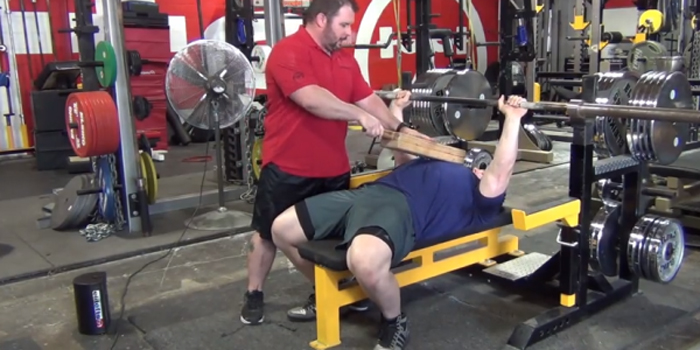
How to Bench 225 for 40 reps
So this Thursday was the The Bench Press to beat Breast Cancer. This was a Bench-for-Reps Contest where contestants could choose to bench press 45lbs, 65lbs, 95lbs, 135lbs, 185lbs or 225lbs for as many reps as possible. We had a great turnout with over 100 competitors which we raised over $1300 for Susan G. Komen Columbus.
I started this even at Denison University back in 2004 and I am glad they are still putting it on every spring. My how is that 11athletics will continue to put this on in the Fall to benefit Komen Columbus while Denison puts it on in the Spring to benefit the American Cancer Society in conjunction with the Relay for life.
https://www.facebook.com/video.php?v=712060558884597&set=vb.119632711460721&type=2&theater
So, last night I got to see a lot of people and it was great to see some DU alums like Ed Hebb and Dan Risko. Max Ungar brought some members of the Big Red Fitness club and it is always nice to see old friends like Chris and April Vacchio, Sue Burton and the crew from Ohio Krav Maga, Heather and Natalie from CrossFit Scioto and Brandon Moxley who won the 225lbs class with 23 reps.
When I was talking with the other trainers at 11athletics, we got into the discussion of what is the key with any type of reps competition? Here is the best summary I could muster. This is from an article I wrote about the combine:
The 225lb Rep Test
Train for Maximum Strength
One of the biggest misconceptions of training for the 225 rep test is that an athlete must train by doing the 225 rep test. There have also been drop sets, clusters, rest-pause sets, and a plethora of other variations used. Regardless, all of these methods have the same drawback with these methods of training; the weight on the bar is still 225 pounds.
Buddy Morris sums it up this way, “The key [to the 225 test] is continuing to increase your maximal strength so that the bench press now becomes a less percent of your one-rep-max.”
Here is an example with a necessary precursor stating that I am not or have never been very strong in the grand scheme of things.
Once a year for the Bench Press for Breast Cancer hosted at Denison University, I would perform the 225-rep test. Just once per year. For two years in a row, my best performance was 40 reps. My one rep maximum was 440 at that time and I never did a set of bench press over 5 reps during that time.
Those forty reps could be attributed to the combination of my protruding abdominal area and my T-Rex arms. Most likely, it also was related to the fact that 225 pounds is about 51% of 440. Remember the 225 pounds for the combine is the constant; the variable you control is the maximum strength you possess thereby “reducing” the load used for the test.
You have a time limit. Regardless of strength level, every athlete will reach his lactate threshold at some point during the test. When Morris and Jacksonville Jaguars Head Strength and Conditioning Coach Tom Myslinski were with the Cleveland Browns organization, they timed their players while performing the 225-combine test. “After 44 or 45 seconds they were shot, regardless of strength level.” Using this time limit as a standard, muscular failure before your team average can signify substandard maximal strength levels.
During the 225 Test
1. Shorten the stroke. This is a fairly common practice for powerlifters but not necessarily for athletes. Maximizing the grip width, learning how to arch, and retracting the shoulder blades can accomplish all this.
2. Don’t pace yourself. Perform as many repetitions as possible as quickly as possible. Remember, you have a relative time limit until total muscular fatigue sets in. Dave Tate suggests to avoid keeping the bar motionless for too long of a period. “No more than one to two seconds,” Tate confirms.
Keep in mind, the performance tests are just a piece of the total picture. These tests give an objective snapshot of the overall athletic profile of a potential player. Whether the event is the NFL combine, a division I university senior prospect day, or even an off-season testing day at the high school level; the performance tests involved can reinforce opinions or leave doubts. Most coaches will admit that position specific drills carry much more weight regardless of level or sport. The combine tests, however, leave little doubt in the athletic potential of the athlete.
Following this advice may not land you an NFL contract, a college scholarship or even a spot on the travel squad. Hopefully, you can score high on a few tests you already know the answer to.
How does this apply to other strength events?
Well the same concept is true if you are doing a car deadlift for time, clean & jerk for 30 reps for "Grace". If I need to do 135 for 30, having a max clean & jerk of 300 would be better than 185. It is really not feasible to before 72.5% of your max for 30 without having issues.
For the BP2bBC, one thing that was evident was just about everyone gassed about the same time frame regardless of weight. So 2 people of the same strength doing tow different weights still performed reps for the same duration. The difference was how many within that similar time frame.
Being 35lbs lighter and way weaker, I probably will never get 40 reps again, that was really my only chance at NFL stardom. I think I missed my window.
WEDNESDAY
Snatch
40 for 5 doubles
Clean & Jerk
50 for 3 doubles
1st and last Olympic lifting competition on Sunday. Wish me luck. I'll need it.









1 Comment